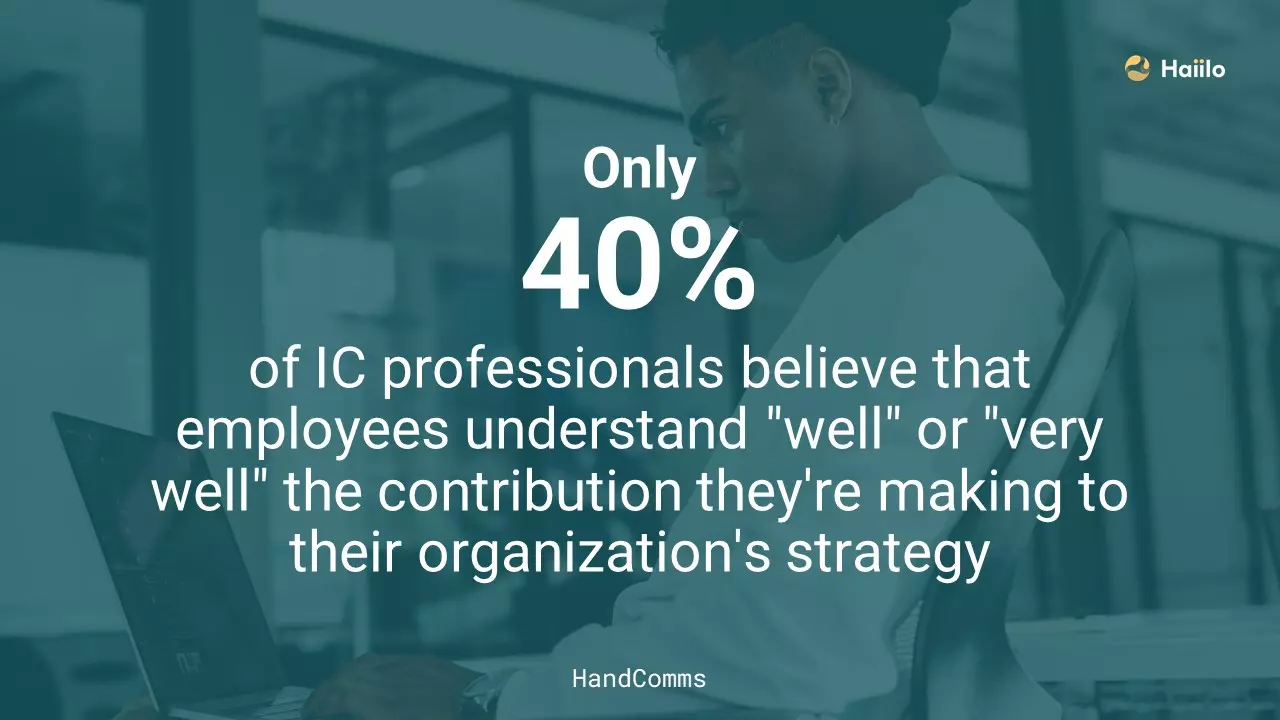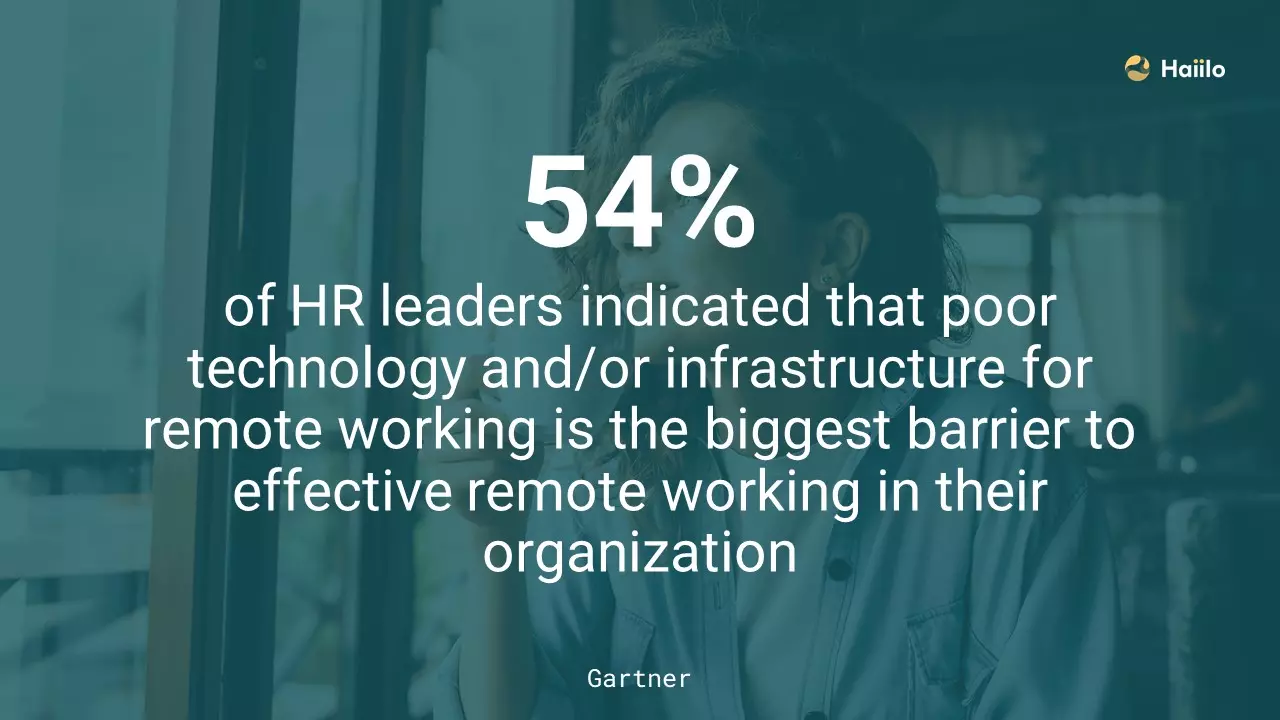Communication culture in your workplace has a significant impact on your employees’ experience, motivation, engagement, and overall business success.
Organizations with open, honest, and transparent communication cultures enjoy the benefits of happy and satisfied employees.
However, with the emergence of remote work and dispersed workplaces, many organizations are struggling to build and manage communication cultures that keep employees connected, engaged, and inspired at all times.
Building and reinforcing your communication culture is easy with the right IC tools
📚 Before we dig deeper into how to build a positive communication culture, check out our article about Communication Strategy and How to Create Your own.
In this blog, we will go over the importance and benefits of positive communication culture. We will also cover best practices for creating a culture in which employees can thrive and give their best.

Communication Culture Defined
Communication culture in the workplace can be defined as a way your organization engages with the people, shares information, drives conversations, and encourages employees’ share of voice.
Moreover, communication culture defines how employees communicate with each other, as well as the ways managers communicate with their teams.
Therefore, communication culture is shaped by communication that takes place on all organizational levels and across different communication departments including:
- Corporate and business communications
- Internal communications
- External communications
- Leadership communications
- Management communications
- Crisis communications
- Change communications and
- Other
💡Check out the video below where communication experts share their definition of internal communication 👇
The Role of Communication in Driving Positive Workplace Culture and Business Success
The role of communication culture in the workplace has a significant impact on some of the major business and people-related KPIs. It has been proved that organizations with positive communication cultures have a big competitive advantage and are more efficient in building business resilience and continuity.

As employee-centric organizations are well aware of the benefits of open communication culture, it is not surprising that many organizations are now rethinking their internal communication strategies and efforts.
Let’s now take a look into the impact of employee communication in building a positive workplace culture and driving business success.
Employee Experience
According to research, 74% of employees have the feeling they are missing out on company news. When this happens, not only that employees become less productive, but they also don’t feel like a part of their organization. Consequently, these employees often rate their work experience as poor.
When employees feel informed about the important company updates, and when they are constantly connected with their peers and managers, it is much easier to inspire them to be the best version of themselves.
📙 Also read about the impact of internal communication on employee productivity.
Employee Engagement & Productivity
An organization’s communication culture has a big impact on employees’ engagement and productivity in the workplace. Moreover, 85% of employees say they’re most motivated when management offers regular updates on company news (Trade Press Services).

Consequently, when organizations ensure that their employees are connected at all times, they see an increase in employee productivity by 20 to 25%.
Employee Retention
Communication in the workplace has a significant impact on employee retention, and organizations that invest in their communication culture see lower turnover rates. Moreover, businesses with effective communication are 50% more likely to have lower employee turnover (Clear Company).
On the other hand, 47% of people actively looking for new positions say company culture is the main reason for that.
Workplace Alignment
Aligning employees with the overall business strategy is crucial for organizational success, and communication culture plays a big role here. Yet, only 23% of executives say that their companies are excellent at aligning employees’ goals with corporate purposes.
Moreover, only 40% of IC professionals believe that employees understand “well” or “very well” the contribution they’re making to their organization’s strategy.

When employees’ are aligned with the shared purpose and values, they are more likely to stay loyal to their employers, and they often show much higher levels of engagement.
Brand Ambassadorship
Organizations with positive communication cultures are more likely to encourage and enable their employees to become brand advocates. They know how to communicate the benefits of advocacy for improving employees’ own personal brand and helping their organizations to achieve better business results.
Since employee advocacy can have a significant impact on an organization’s sales, marketing and HR efforts, it is not surprising that every company now strives to turn employees into brand ambassadors.
Workplace Collaboration
Great communication cultures are the ones that encourage and support easy collaboration among various teams and departments.
Even though interdepartmental collaboration has become a must-have in the business world, 39% of employees believe that people in their own organization don’t collaborate enough (Queens University). And 86% of employees and executives cite lack of collaboration or ineffective communication for workplace failures (Salesforce).
Safety & Compliance
Open and transparent communication also enhances workplace safety. Yet, many employees still don’t feel encouraged enough to share safety issues with their managers. Additionally, many of them don’t have an easy way to stay connected with their managers and safety representatives.
Employers need to encourage their workers, through open communication culture, to always share their safety concerns.
Change Management
Change initiatives such as digital transformation are much easier within organizations that support continuous communication in the workplace. Moreover, organizations with effective change and communication programs are 3.5 times more likely to outperform their peers.
📙 Also read our guide for successful Change Management in the workplace.

When organizations have a clear plan around how to communicate the what, why, who, and when of the change, they are more likely to get their employees’ buy-in and achieve organizational alignment.
Workplace Innovations
Companies in which employees easily communicate and collaborate with each other are also more successful in driving innovations and optimizing their business processes. Also, such organizations are much better at enabling their knowledge workers and driving knowledge sharing among employees.
6 Ways to Create a Positive Communication Culture
There are no shortcuts for creating a positive communication culture in the workplace. Actually, this is a never-ending process in which employers need to continuously invest their time and resources.
Even though every organization’s culture and core company values are different, there are some best practices that every organization should follow.

Besides the fact that internal communicators, managers, and leaders need to possess excellent communication skills, there are some standard rules employers need to be aware of.
With the emergence of remote work and dispersed workplaces, the importance of these rules is bigger than ever before.
1. Eliminate one-way communication
The days when employers would just send company-wide newsletters are over! Such one-way communication doesn’t allow employees to share their own voices and raise their concerns.
It doesn’t allow them to join company conversations and feel more engaged. On the other hand, employees who feel their voice is heard are 4.6 times more likely to feel empowered to perform their best work. (Forbes)

Positive communication culture is one in which employees always have a way to provide their feedback.
📙 Also read about the power of bottom-up feedback.
2. Avoid information overload and make communication more relevant
Even though frequent business communication is important to employees, too much irrelevant information can be a huge productivity stopper. Yet, many employees still receive information that is not relevant to them at all.
Did you know that 62% of the emails received by employees are not important? This is the result of the lack of content personalization and localization.
Remember, it only takes a few one-size-fits-all emails for employees to start ignoring them. Therefore, companies have to do a much better job of making communications more personalized and relevant to their employees.
3. Manage grapevine communication
According to the American Management Association, 70% of all organizational communication emanates through the grapevine. Moreover, most employees deem it trustworthy as well.
Therefore, grapevine communication is impossible to stop or prevent. It happens in every workplace. However, businesses with positive communication cultures are much better at managing the grapevine effect and mitigating the consequences of rumors and gossip in the workplace.
4. Involve leadership
Leadership communication is one of the most important building blocks of the overall communication culture. However, only 13% of employees strongly agree that their leaders are effectively communicating with the organization. (Gallup), and 91% of employees think that their managers lack communication skills. (Inc.)

Leaders, in collaboration with internal communications departments, can go a long way in creating a thriving communication culture in the workplace.
5. Balance between corporate and casual
The tone of voice in building a positive communication culture is crucial. However, finding the right balance between the corporate and casual voice can be challenging. When defining your organization’s tone of voice, the most important things to remember are:
- Communicate with consistency and credibility
- Understand the difference between your corporate branding and employee voices
- Engage both leadership and internal communications teams
🎧 To learn more about how to find the right voice for your organization, tune in and listen to our comms shift podcast.
💡 For more communication tips like this, check our communications podcast library.
6. Embrace the power of technology
More than 50% of high-performing organizations regularly invest in new tools to improve communications (Ragan). Today, when communication in the workplace mostly happens via digital communication channels, it is natural that organizations are looking for more modern and intuitive communication solutions.
Moreover, since 73% of internal profs stated that increased mobile work is their top priority (Gatehouse), many organizations are switching to mobile-first communication technology.
Improving Communication Culture in Your Organization
54% of HR leaders indicated that poor technology and/or infrastructure for remote working is the biggest barrier to effective remote working in their organization (Gartner).

Therefore, the role of technology in driving and maintaining positive workplace culture is inevitable. It plays a significant role in providing positive employee experience and enabling employees for success.
With the use of proper employee communication and advocacy tools, organizations can improve their communication culture by:
- Better understanding their multigenerational workforce’s needs and communication preferences
- Segmenting internal audiences by various criteria such as departments, job roles, locations, preferences, interests and many more
- Providing personalized social media like news feeds
- Creating and distributing content relevant to the audience
- Driving higher employee engagement with internal communications campaigns
- Empowering managers to reach every employee at the right time with the right message
- Ensuring two-way workplace communications and driving employees’ share of voice
- Engaging leadership in daily company-wide conversations
- Improving employee productivity and safety by keeping all the relevant content in one place and consolidating multiple communication channels into a single platform
- Driving employee advocacy with engaging ambassadorship programs
- Measuring the impact of communication on driving better business results










